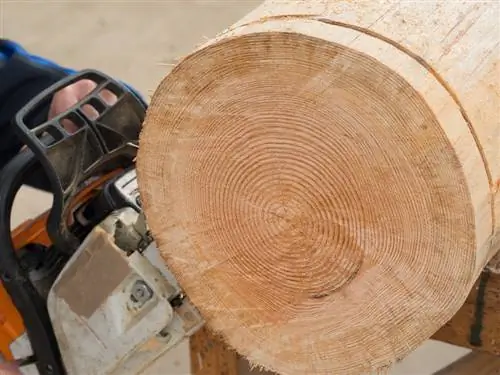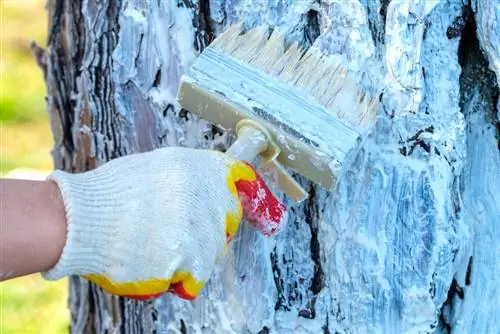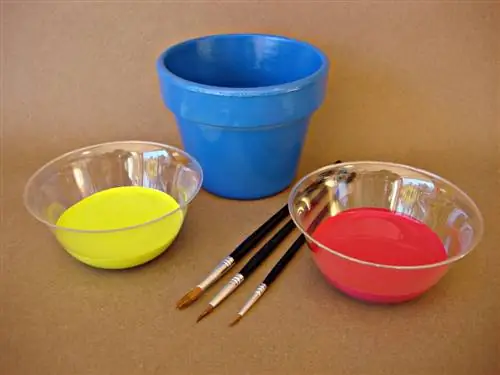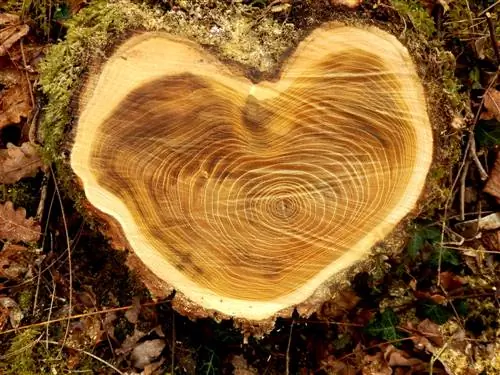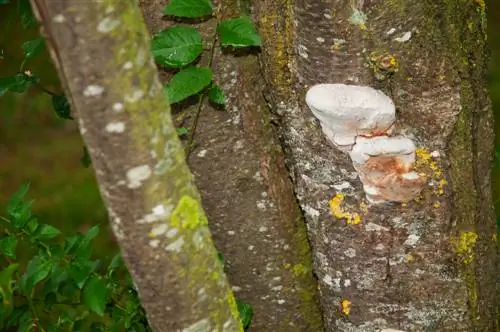- Author admin [email protected].
- Public 2023-12-16 16:46.
- Last modified 2025-01-23 11:21.
There are many reasons why you should weatherproof a tree trunk: The first is simply that wood that is constantly exposed to moisture rots very quickly - and the construction project is therefore doomed to failure from the start, depending on the type of wood less quickly.
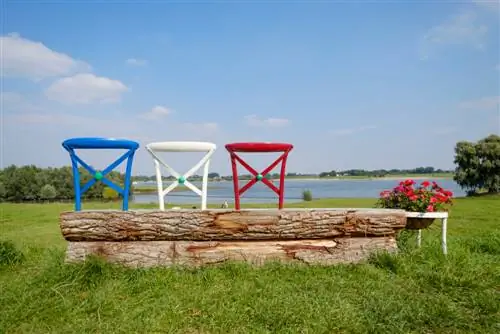
How can I waterproof a tree trunk to make it weatherproof?
To make a tree trunk weatherproof, either treat it with natural products such as beeswax or wood oil for indoor areas, or use varnish, wood preservative glaze or tar for outdoor areas. Hardwoods such as oak or beech offer additional resistance to moisture.
Impregnate tree trunks without chemicals
If the tree trunk is to be used indoors or on a covered (and therefore protected from rain) terrace, you can impregnate it with natural products such as oil or wax. If you use simple beeswax, warm it slightly before applying it. This way it is easier to distribute. The disadvantage, however, is that waxed surfaces tend to soften or melt a little in warm weather, so this method is not necessarily suitable for seating and/or very sunny, warm locations. Alternatively, treatment with wood oil (€24.00 on Amazon) is possible. The advantage of both products is that they are non-toxic, which is particularly important indoors - after all, you don't necessarily want to inhale toxic gases from the wood protection glaze.
Impregnation with varnish, glaze or tar
However, tree trunks placed outdoors are constantly exposed to moisture and therefore require more consistent protection. Treat this wood with a suitable varnish, a glaze or wood protection paint or even tar. You can achieve a particularly high protective effect in this way: Bathe the log completely in a liquid wood protectant for a few days. To do this, use a thin glaze as it penetrates deeply into the wood. If “bathing” the trunk is not possible, simply paint over it several times at intervals of several days. Don’t forget to treat the floor too! The aim is for the wood to soak up the glaze. Then seal the trunk with wood protection varnish or tar.
Tip
Furthermore, you should preferably use hard wood such as oak or beech, especially for outdoor projects, even if they are significantly more expensive than spruce etc. However, they are much more resistant to moisture and last much longer.


